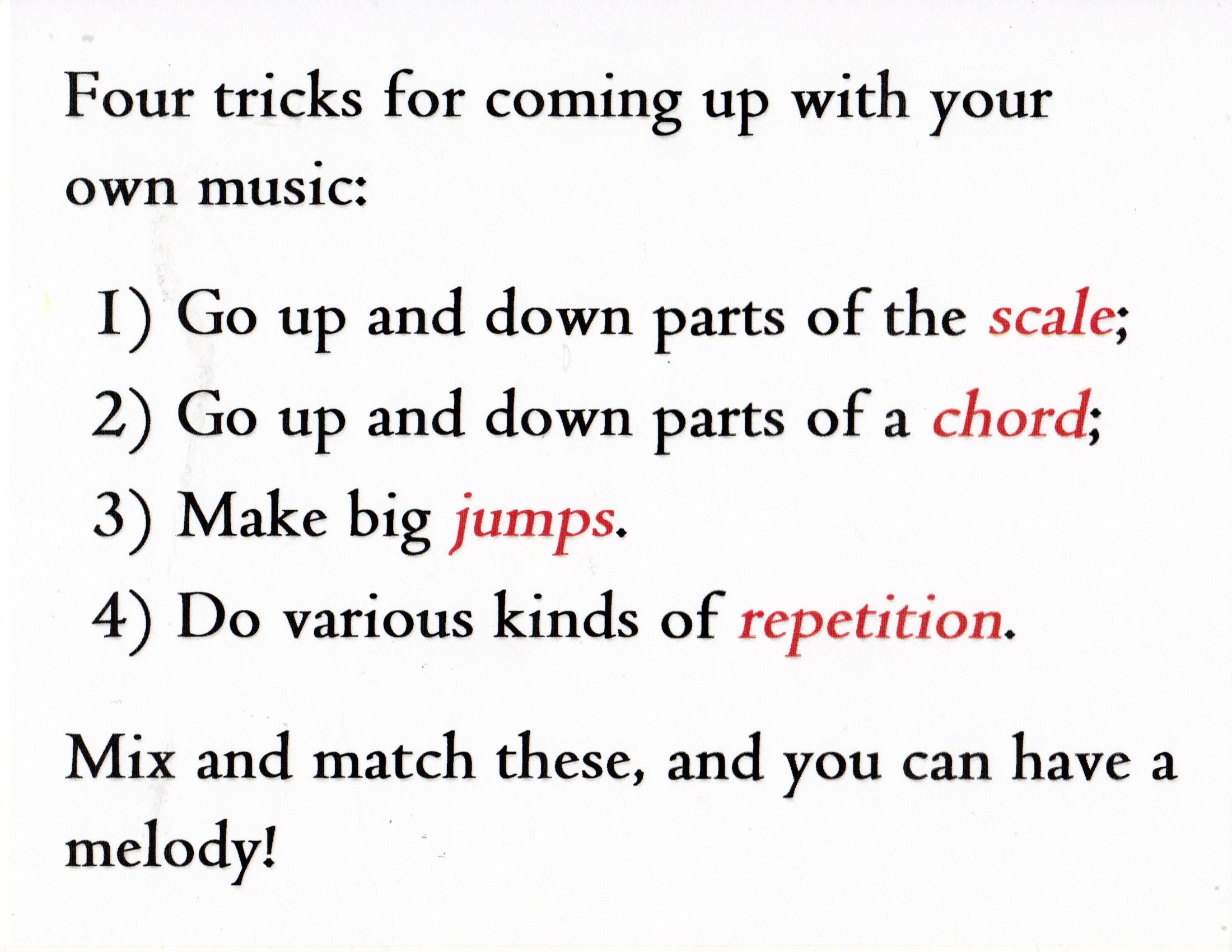Recently I’ve come to the realization that the typical melody has four simple traits that we can easily look at and figure out --- whether we’re learning a new tune or coming up with our own new composition.
- It can follow the scale. Perhaps the most famous pieces that use scale motion almost exclusively are Handel/Mason’s ‘Joy to the World’ and Beethoven’s ‘Ode to Joy’ --- look how they move around almost totally on the scale!
- It can follow the chords. Lots of pieces do this, and the opening movement of Mozart’s ‘Eine Kleine Nachtmusik’ is a classic example.
- It can make big jumps. A charming and challenging feature in many good melodies is a leap, at least an interval of a fourth, and often much more. I discussed this in my blog post about Beatles ballads.
- It uses various kinds of repetition. A series of notes of any length may be exactly repeated, or it may repeat starting on a different scale step, or… there are all sorts of creative possibilities for this! But repeating in one way or another is a very important part of most music.
Folk tunes are wonderful examples of how these four things mix and match to create a new organism. Every song is a different combination of these elements --- check them out!
When I start a new tune myself I often informally analyze the way these four characteristics figure into it --- whether it’s a tune I’m learning or one I’m composing. I take a pencil sometimes and mark how the various sets of notes repeat or are similar, and it’s amazing how the structure comes into form! I encourage you as a musician to try whatever works with your own goals.





Comments